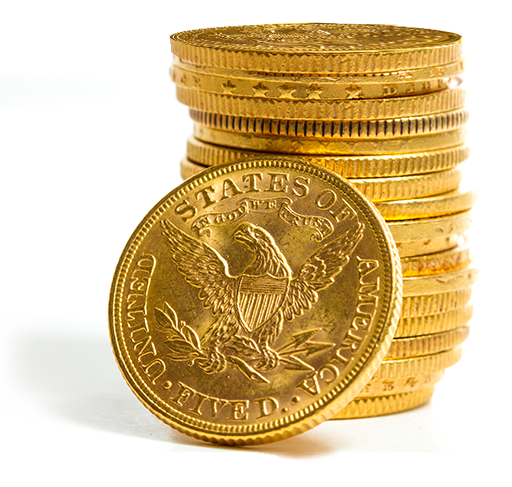
Gold is a universally recognized means for investors to preserve wealth and protect against financial calamity. It has proven its worth in the face of inflation, recession, currency fluctuation, market collapse and social upheaval.
Understanding the history and economics of gold will strengthen your investment strategy.
Today’s gold market stretches across the globe. Gold is integrated into every economy on the planet. Since the early 1970s, the annual amount of gold purchased has tripled. Each region has its own cultural and financial reasons for investing in the precious metal. This diversity strengthens and balances the global gold market and helps ensure continuous demand. The phenomenal growth in the demand for gold in the East reflects their rapidly growing economies and the shared desire for a portable, secure, and beautiful way to store wealth.
Gold jewelry accounts for almost 50% of total global gold demand. Jewelry fills aesthetic, cultural and investment needs around the world. Its weight is measured in troy ounces and its purity is measured in carats.
Gold is a proven safe haven asset that can diversify and protect investment portfolios. It serves as a viable hedge against stock market drops, soaring inflation, and volatile monetary policy. Physical gold is also an excellent long-term store of value.
Currency markets are going through a historic and volatile paradigm shift. Central banks are protecting their wealth by actively buying gold and physically keeping it their own countries. Last year was the 12th consecutive year of net purchases. Central banks added 463 tons of gold to global reserves in 2021. That was 82% higher than 2020.
Gold has a wide range of industrial applications. However, the electronics sector alone accounts for 80% of industrial gold use. Gold’s unique physical properties make it an essential raw material in the production of the electronics found in phones, cars, and semiconductors. As the world becomes exponentially more wired, so will the industrial demand for gold.
Gold mines provide approximately 75% of the global gold supply each year. Mines are located around the world. While mine production has increased significantly since 2008, large new discoveries are growing rarer. Mining is a slow process. The time from discovery to production can take decades. Therefore, gold from mining does not respond quickly to price changes.
The demand for gold exceeds what mines can produce. Thus, the balance is filled by recycling existing gold. The majority of recycled gold, at least 90%, comes from jewelry. Recycled gold responds quickly to changes in price and other market disturbances.
With finite supply and increasing demand, gold prices are set to keep increasing.
Approximately 205,000 tons of gold have been mined since ancient times, two thirds of which have been mined since 1950. That 205,000 tons breaks down as follows:
Jewelry – 46%, Bar and Coins – 22%, Central Banks – 17%, Other – 15%
The first official declaration of gold as money came around 600 BC, where King Alyattes of Lydia, an ancient kingdom in modern-day Turkey, oversaw the first recorded mint. An alloy of silver and gold known as electrum was used to create coins, which were stamped with pictures that denoted denominations.
As Near East empires grew and interacted with Europe, so did the use of gold coins. Proving to be a steady medium of exchange that could cross borders, their usage continued and expanded through the ages. In 1792, the Coinage Act saw the birth of the United States mint and the US dollar.
The ‘classic’ Gold Standard was adopted in 1879. The Gold Standard was a system under which nearly all countries fixed the value of their currencies in terms of a specified amount of gold, or linked their currency to that of a country which did so. Gold coins circulated as domestic currency alongside coins of other metals and notes. As each currency was fixed in terms of gold, exchange rates between participating currencies were also fixed.
After the destruction of World War 2, the Bretton Woods system created a new, more stable, financial order with the US dollar at the center. The system fixed the dollar to gold at the existing parity of US$35 per ounce. All other currencies had fixed, but adjustable, exchange rates to the dollar.
Then, on August 15, 1971, to address the country’s inflation problem and to discourage foreign governments from redeeming more and more dollars for gold, President Richard Nixon de-pegged the US dollar from the price of gold. This caused the Bretton Woods System to collapse.
The US has now had a purely fiat monetary system for more than 50 years. There is no objective anchor for any currency. National currencies now represent nothing more than debts owed to central banks. Faced with hyperinflation and the weaponization of currencies, nations have now begun to move away from the fiat dollar as the standard for global trade. The intrinsic value of gold is once again becoming apparent and in demand.
All the gold ever mined would fit into a crate 69 cubed feet.
24 karat gold is pure gold with no other metals. 18 karat gold is 75% gold and 25% some other metal like copper.
The largest gold coin ever made was cast by the Perth Mint in 2012. Weighing one ton and measuring 31.5 inches in diameter.
A “London Good Delivery Bar”, the standard unit of traded gold, is made from 400 troy ounces of gold.
The US Federal Reserve holds 6,700 tons of gold, in 530,000 gold bars.
There are 147.3 million ounces – around 4,600 tons – of gold stored in the US Bullion Depository at Fort Knox.
Even at only 10 parts of gold per quadrillion, the world’s oceans are estimated to hold up to 15,000 tons of gold.

Republican Metal Company can help. To learn more about buying or investing in precious metals, or if you would just like to talk about the field, please reach out to us any time.

Use Republican Metal Company’s knowledge to help you invest in precious metals, regardless of your situation. Simply put, we’re experts in the gold and silver markets. We help you meet your goals and beyond.
The statements made on this website are opinions and past performance is no indication of future performance or returns. Precious metals, like all investments, carry risk. Gold, silver and platinum coins and bars may appreciate, depreciate or stay the same depending on a variety of factors. Republican Metal Co. cannot guarantee, and makes no representation that any metals purchased will appreciate at all or appreciate sufficiently to make customers a profit. The decision to purchase or sell precious metals, and which precious metals to purchase or sell are the customer’s decision alone, and purchases and sales should be made subject to the customer’s own research, prudence and judgement. Republican Metal Co. does not provide investment, legal, retirement planning, or tax advice. Individuals should consult with their investment, legal or tax professionals for such services.